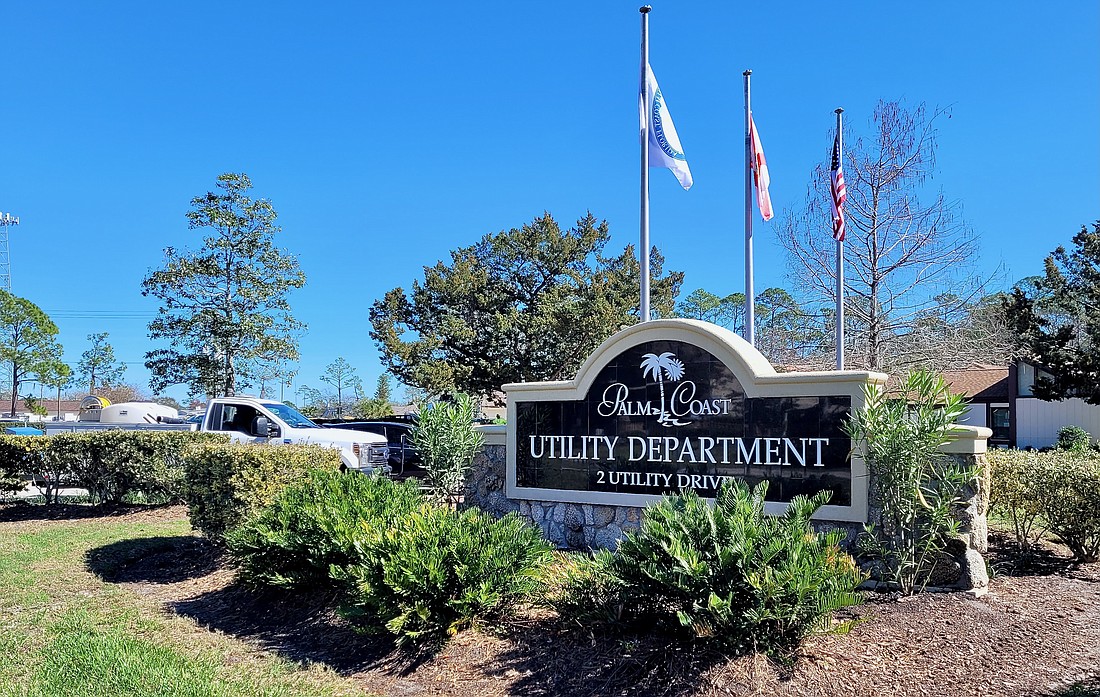- April 11, 2025
Your free article limit has been reached this month.
Subscribe now for unlimited digital access to our award-winning local news.

A rate study by Palm Coast’s utility department shows that the city must raise utility rates and development impact fees to keep up with growing water and wastewater demands.
A rate study by a consultant suggested that the city increase utility rates by 18%.
Utility Director Steve Flanagan said at a Palm Coast City Council meeting on Nov. 14 that the city’s continued growth means demand on its water and wastewater services is increasing.
To meet that demand, the utility department plans to expand several water and wastewater treatment plants and undertake other capital projects, Flanagan said.
But it will need more funding to do so.
Wastewater Treatment Plan No. 1, for example, is scheduled for a capacity upgrade in 2031, Flanagan said. But the latest analysis shows that the city’s recent growth over the last five years means that upgrade needs to happen sooner.
“The latest analysis report advanced the upgrade to fiscal year 2027,” Flanagan said. “This is a vital project to provide for our system and community growth.”
Flanagan and Eric Rowe, representing Stantec Management Consulting, which conducted the rate study, presented the analysis and two possible rate increase scenarios to the City Council.
The analysis projected that over the 10 years from fiscal years 2024 to 2033, the needed capital projects would cost $635 million. Between fiscal years 2024 and 2026, capital projects would cost $225 million.
Rowe said while around $44 million in available grants and loans can go toward the $225 million, the city must also consider the projected increase to the utility department’s operational costs.
The analysis showed that personnel and equipment costs could increase by $6 million per year by 2028, he said. By 2033, operating costs could increase to $70 million.
To minimize impacts on residents, the rate increases would only apply to the consumption rate of utility bills, not the fixed charges, Rowe said.
Scenario one splits the increase to residents between one 12.5% increase in 2024 and one 6% increase in 2025. Scenario two splits the increase among three 6% increases in 2024 and 2025.
Rowe said the average single-family home in Palm Coast has a monthly bill of $71.09. Scenario one’s initial 12.5% increase would increase that bill to $79.97 in October 2024, and then to $84.76 in October 2025 after the final 6% increase.
Scenario two would increase the bill to $75.35 in April 2024, $79.87 in October 2024 and $84.66 in October 2025.
The rates would return to standard inflationary increases after that, at around 3%, Rowe said.
Rowe said that to curb expense hikes for people on fixed incomes, Stantec also recommends creating a fifth price tier for water consumption with a reduced rate, called the "Life Line" tier. The city’s current lowest water consumption tier is 0-5,000 gallons.
The new tier would be 0-2,000 gallons at a reduced rate, and the next tier would be 2,001-5,000 gallons. Rowe said 48% of single-family homes fall under the 2,000-gallon limit.
Stantec also proposed an increase in the one-time impact fees for developers. Legally, Rowe said, the state limits impact fee increases to 50% of the current rate. Stantec proposed the city increase the impact fees to developers by 12.5% a year over four years until it reaches that 50% limitation, starting in November 2024.
The 12.5% installments would increase impact fees from $6,145 to $9,218 by fiscal year 2028.
Council hesitates to approve rate increase
The members of the City Council were hesitant to voice approval for the increase.
Vice Mayor Ed Danko — presiding over the meeting in Mayor David Alfin's absence — likened the study to using a crystal ball. No one knows for sure that costs will be that high in the future, he said, especially after the next presidential election.
"We've got to worry about what our residents pay," he said. "We've got a lot of people on a fixed income."
Council member Nick Klufas said he appreciated the addition of the Life Line tier to help protect families on limited incomes.
"People today who are having their water turned off are most apt to be the ones who fall victim to these types of studies,” Klufas said.
Council member Theresa Carli Pontieri suggested that city staff bring the council a model delaying scenario two's first increase until October 2024 and increasing the impact fee rate further, also to be implemented in October 2024.
“I am very hesitant to raise anything on our residents above a normal CPI increase, specifically, until we see what we can bring in from these impact fees," she said.
Your free article limit has been reached this month.
Subscribe now for unlimited digital access to our award-winning local news.